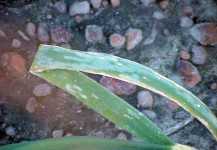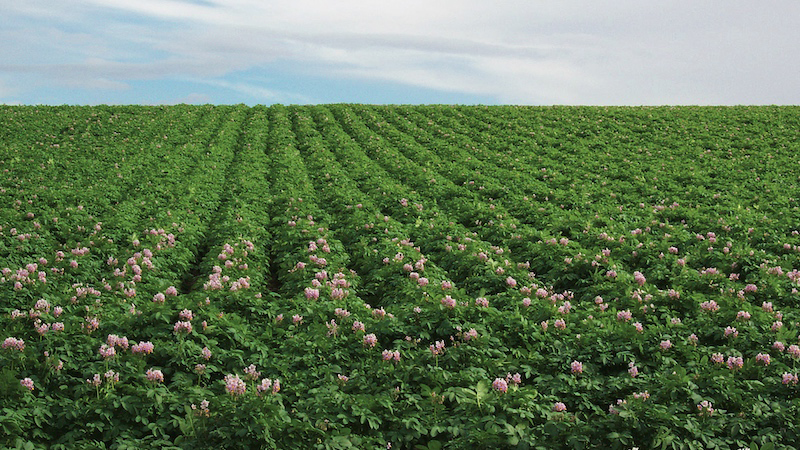Botrytis Leaf Blight Of Onion Anything But A Blast

Identification
Botrytis leaf blight, sometimes called “blast,” is a fairly common foliar disease of onions in Florida. While other species of Botrytis have been associated with diseases of leaves and bulbs of onions, B. squamosa is generally regarded as the cause of leaf spots in onion foliage and sometimes in the outer scales of the bulb.
Botrytis leaf blight is most common south of Gainesville. Symptoms of botrytis leaf blight include whitish flecks on onion leaves. Herbicides, thrips, and ozone can induce symptoms that appear somewhat similar to those of botrytis leaf blight in onions.
Botrytis lesions typically begin as distinct water-soaked areas that persist around mature lesions. Flecking caused by ozone injury will be irregular and lack water-soaked margins.
When numerous spots are present, leaf tips die back and whole leaves may be killed. With increasing severity of the disease, onion fields will appear progressively more yellow in color when viewed from a distance.
The outer leaves tend to be more susceptible to botrytis leaf blight than younger leaves. Conidial production is greatest on blighted and dead leaves. Small lesions in green leaves may not produce conidia. Because larger, more numerous lesions occur on older leaves, the disease will appear more as a blight than as distinct spots that are often seen on younger leaves, particularly near the leaf tips.
Survival And Spread
Botrytis leaf blight is regarded as a cool, wet-weather disease. Under optimum temperatures of 59°F to 68°F, infection can occur with only seven hours of leaf wetness. If temperatures are outside the optimum range, longer periods of leaf wetness are required for infection. For example, temperatures at 48°F and 79°F are conducive to infection, provided that leaf wetness periods increase to 10 hours. Infections can reach severe levels if leaf wetness periods approach 14 hours, provided that temperatures are in the optimum range.
The sources of inoculum for the disease in onions grown in Florida have not been determined. However, nearby onion plantings, volunteers, and old onion debris in fields or cull piles are likely sources of inocula. Asexually produced conidia are the principal type of inoculum. Conidia, dispersed mainly by wind, are produced abundantly during cool, wet conditions on blighted leaves and onion debris. The fungus also produces sclerotia, which provide a mechanism for long-term survival of this fungus.
Management Methods
To reduce sources of inoculum, cull piles should be destroyed and volunteer onions should be rogued. At harvest, severed onion tops should be removed from the field and destroyed. Long rotations (more than three years) between onion crops also are recommended.
Botrytis leaf blight can be controlled by spraying with labeled fungicides or combinations of fungicides applied on a seven- to 10-day basis depending on weather conditions.
Consult UF/IFAS recommendations for currently labeled fungicides for botrytis leaf blight in Florida onions.










